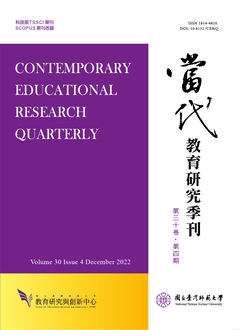

研究目的
本研究目的在檢測少年參與課外活動的頻率及樣態與正向發展的關聯性。以正向發展理論及零和理論為基礎,檢視活動參與樣貌、活動超載假設及都市或鄉村脈絡的交互作用。
研究設計/方法/取徑
以全國範圍抽樣之1,214 位國中8 年級學生樣本,採自填式問卷填答,應用潛在剖面分析(Latent Profile Analysis, LPA)及多元線性迴歸分析模型,控制家庭資本及人口變項檢驗變項之相關性。
研究發現或結論
研究結果支持活動超載假設,少年參與課外活動之參與時間頻率愈高,有較高的正向發展分數,但參與過多的少年正向發展程度開始下降。少年參與課外活動的潛在剖面組有三:「低度參與組」、「高度參與活動組」、和「中度參與組」。進一步檢驗顯示「高度參與活動組」及「中度參與組」,相較於「低度參與組」都有較高的正向發展分數,同時也發現具都市化脈絡的調節作用,住在城鎮區的少年若屬於高度參與活動組,在正向發展的程度之作用反而呈現拉低的樣態。
研究原創性/價值
本研究是國內首度以潛在剖面分析了解國中生的課外活動參與樣貌,並檢測都市化程度的調節作用,不但補充國內實證研究之不足,也對國內發展少年課外活動之政策、方案或資源之佈建帶來啟示。
Purpose
This study aims to investigate the correlation between the frequency and patterns of youth participation in extracurricular activities and positive development. Drawing upon the positive development theory and zero-sum theory, the patterns of activity involvement, and the interaction effects within an urban and rural context were examined.
Design/methodology/approach
A total sample of 1,214 eighth graders was selected using a national-level random sampling approach. Self-administered questionnaires were used for data collection. The latent profile analysis and multiple regression analysis models were applied while controlling for family capital and demographic variables to examine the correlations among the variables.
Findings/results
The result supported the hypothesis of activity overload: those who participate in more extracurricular activities have a higher positive development. However, the positive development has declined as the level of participation in activities is over the threshold. Three subgroups of extracurricular participation were also identified. The result displayed “high participation group” and “moderate participation group” had higher positive development scores compared to the “low participation group”. The relation was moderated by urban and township areas.
Originality/value
This is the first study to examine the profile of participation in extracurricular activities, and its association with positive youth development, using a nationwide middle school students sample in Taiwan. This study not only fills the gap due to the lack of empirical studies in Taiwan but also brings out directions for future research and policy implications.

本著作係採用創用 CC 姓名標示-非商業性 3.0 台灣 授權條款授權.
本刊國立台灣師範大學教育研究與創新中心
106台北市和平東路一段162號 | 電話: 02-7749-3670 | E-mail: cerecerq@gmail.com
教創中心 | 師大 | 電子報 | 線上投審系統
本刊由國家科學及技術委員會人文社會科學研究中心補助經費
© 2014 CERI-NTNU
